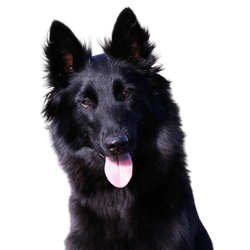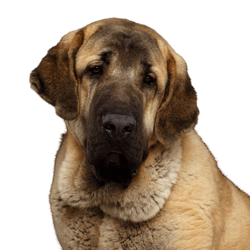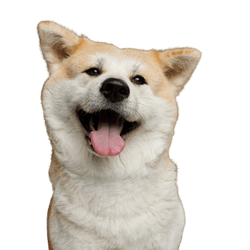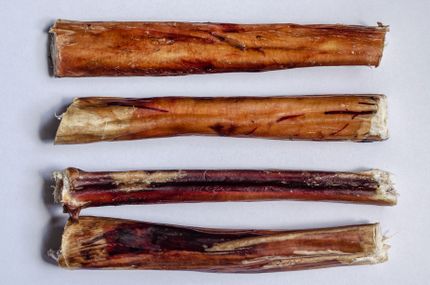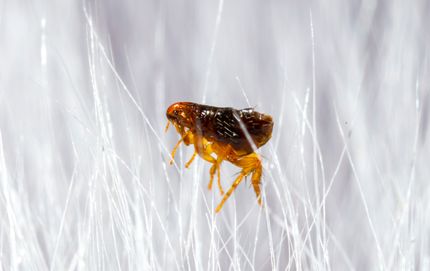
Laika Breed description: Character & Co
Laika
Facts & Origin
Laika - the Russian dog breed which is very similar to the Alaskan Malamute in the breed profile
The name "Laika" is a generic term of various Russian dog breeds. The original home of the Laika is the Russian north. In many ways they resemble the Alaskan Malamute. The FCI has recognized three of these typical representatives of the Laika. Among them are the
- Russian-European Laika
- East-Siberian Laika
- West-Siberian Laika
The FCI has classified them with the standard numbers 304 to 306 in group 5 (point and primitive type dogs) and in section 2 (Nordic hunting dogs).
What is the origin of the Laika?
The Laiki is an ancient and primitive breed. This type of dog is widespread throughout northern Eurasia. For thousands of years, the Laika has served humans as a hunting, working, and guard dog. In the cold season, villages could sometimes only be reached with a sled dog.
Already in the Middle Ages the Laika was mentioned as a perfect sable hunter. Due to these hunting successes in old Russia, it was presented at dog shows in Moscow around 1880. Detailed descriptions of this dog breed also date from this time.
The name is derived from the Russian word "lajat" for bark. The Laika was and is used for stalking. Silently it stalks the game and by its barking it indicates the location of the game. He "barks" at the game.
What are the breed characteristics of the Laika?
All three breed types of the Laika are excellent hunters and should be exercised accordingly. Their former activity as a working dog can be lived out in the field of rescue work. In addition, dog sports such as
- Agility
- pulling dog sport
are a good compensation for these animals.




| Alternate Name | Russko-Evropeïskaïa Laïka, Russo-European Laïka, Vostotchno-Sibirskaïa Laïka, East Siberian Laïka, Zapadno-Sibirskaïa Laïka, West Siberian Laïka |
| Origin | Russia |
| Life expectancy | 12 - 15 years |
| Care requirements | high-maintenance |
| Activity level | high |
| FCI group | Nordic Hunting Dogs |
| AKC group | not recognised |
| KC group | not recognised |
Attitude, character and temperament of the breed
Character of a Laika - different depending on the species
A Laika is not suitable for a beginner. With the education you should consider that your quadruped has the following characteristics:
- independent
- fearless
- persevering
- resistant
- intelligent
- docile
- self-confident
- calm
- balanced
- affectionate
Character
Usage

Health and breeding information
What are typical diseases of the Laika?
The Laika is an original and robust dog breed. There are no known hereditary diseases.
The Laika breeding - where, how, what?
The Laika was bred in the "old way" in Russia until the 40s of the last century. Only the best animals for the job were mated.
Three different breeds of the Laika were later documented for modern breed breeding. Especially the European-Russian Laika became famous in the former GDR. Since 1950 this pedigree dog was used for hunting in the GDR area.
Until today the Laika is looked after in the VDH (Verband für das Deutsche Hundewesen) and in the JGHV (Jagdgebrauchshundverband). The German Club for Nordic Dogs e. V. is responsible for the breeding care. The Laika is almost unknown in Western Europe and only about 40 puppies are registered annually.


Appearance and coat of the Laika
The Laiki have the typical appearance of the Nordic dogs. Their dense coat has a lot of undercoat. But it is easy to maintain. The tail is carried curved upwards. The standing ears are set on the side. Between the three breeds of the Laika there are small differences in the exterior:
- Russian-European Laika
The skull is broader and sits on a dry build. Mostly the coloration of the coat is black and white. Sometimes there are also monochromatic specimens.
- East-Siberian Laika
On the strong body sits a large and wedge-shaped head. It also has a broad chest and a strong back. Its coat colors are black, white and brown. Either the base color is marked with spots or the coat is plain. - West-Siberian Laika
This type has an elongated build and a broad back. The coat colors are white, fawn, red, gray or reddish-brown. Sometimes the coloring is combined with the shades of the basic colors.
How big is a Laika?
In this medium-sized dog breed, the shoulder height differs slightly between the individual breed types.
The East Siberian Laika is the largest representative of this dog breed (height at withers from 53 to 64 cm). The somewhat smaller West Siberian type is 51 to 62 cm. The Russian-European Laika is the smallest with a withers height of 48 to 58 cm.
How much does a Laika weigh?
The weight of a Laika is estimated between 21 and 30 kg. The body weight depends on the sex and the breed type.
How old does a Laika become?
The life expectancy of a Laika is at least 12 years.
| Fur length | long |
| Fur | flat coated |
| Ear shape | Standing Ears |
| Tail | rolled up |
| Anatomy | strong, sporty |
| Size ♀ | 50 - 60 cm |
| Weight ♀ | 21 - 30 kg |
| Size ♂ | 53 - 65 cm |
| Weight ♂ | 21 - 30 kg |
| Suitable For | - |
Colors


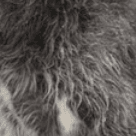


Other large dogs
Useful Articles
You can find articles that might interest you in the dogbible blog to match your favorite breed.
Visit our magazineto stay up to date on dog trends.
To find out more, view our Privacy Policy
Find here the breed that suits you and find out what character traits it has. Here you can also learn more about the origin, size and weight of your favorite breeds.
Matching your favorite breed, you'll find articles that might interest you on the dogbible dog blog.
Eye inflammation in dogs - eye diseases and their causes
3 tips for playing ball with the dog
Dog sitter wanted - by the hour or for the holidays
Dry food or wet food for the dog - which is the better option








